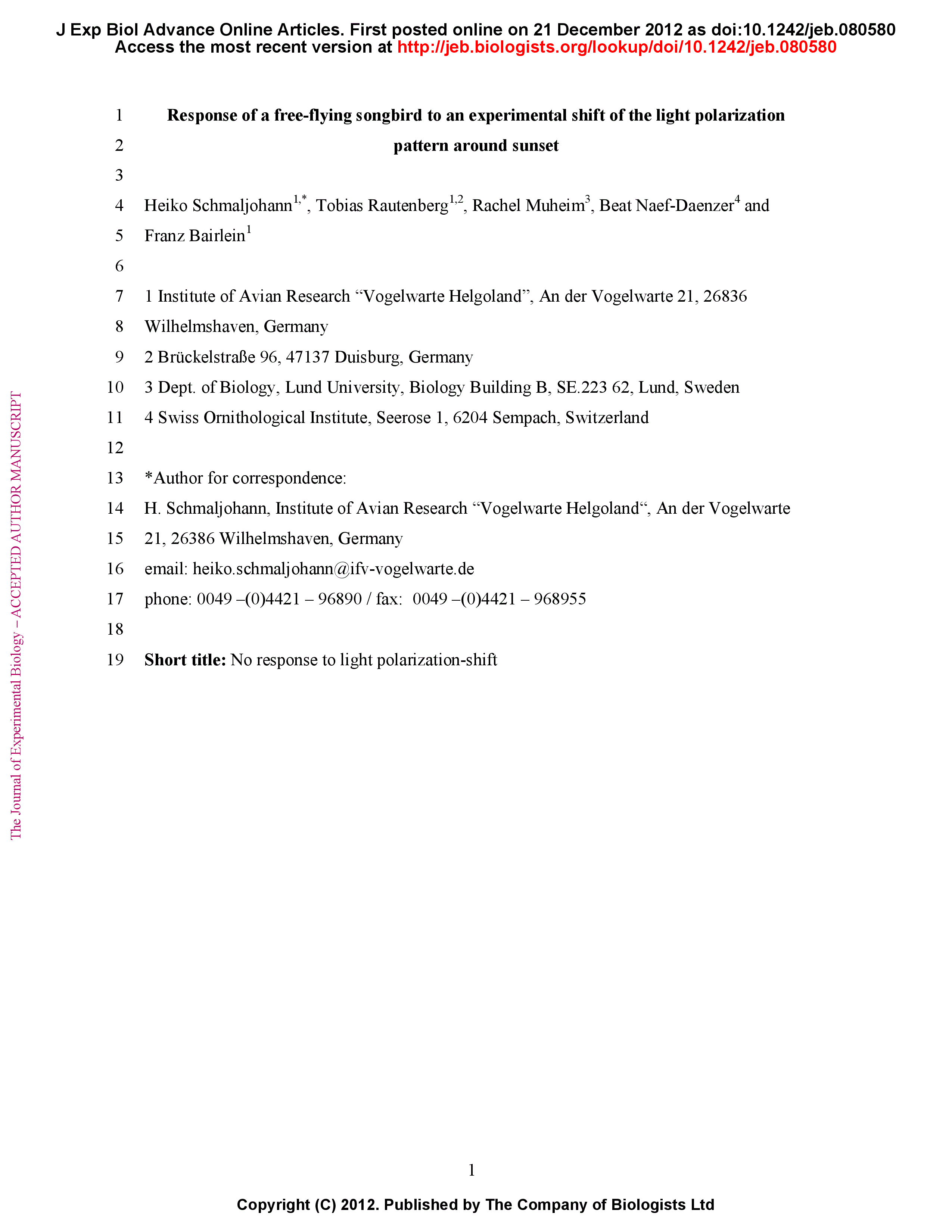Summary
The magnetic field, the sun, the stars and the polarization pattern of visible light during twilight are important cues for orientation in nocturnally migrating songbirds. As these cues change with time and location on Earth, the polarization pattern was put forward as a likely key reference system calibrating the other compass systems. Whether this applies generally to migratory birds is, however, controversially discussed. We used an experimental approach in free-flying birds to study the role of polarization for their departure direction in autumn. Experimental birds experienced a 90° shift of the band of maximum polarization during sunset, whereas control-birds experienced the polarization pattern as under natural condition. Full view of the sunset cues near the horizon was provided during the cue conflict exposure. Here we show both the experimental and the control-birds being released after nautical twilight departed consistently towards south-southeast. Radio telemetry allowed tracking first 15 km of birds' way out, thus the intrinsic migration direction as chosen by the birds was measured. We found no recalibration of the magnetic compass after pre-exposure to a cue conflict between the natural magnetic field and the artificially shifted polarization pattern at sunset. The lacking difference in the departure direction of both groups may suggests that birds did not recalibrate any of the compass systems during the experiment. As free-flying migrants can use all available orientation cues after release, it remains unknown whether our birds might have used the magnetic and/or star compass to determine their departure direction.








